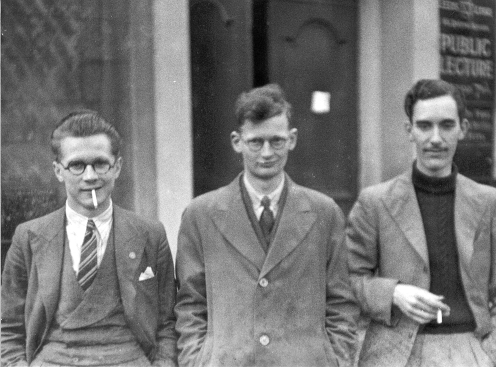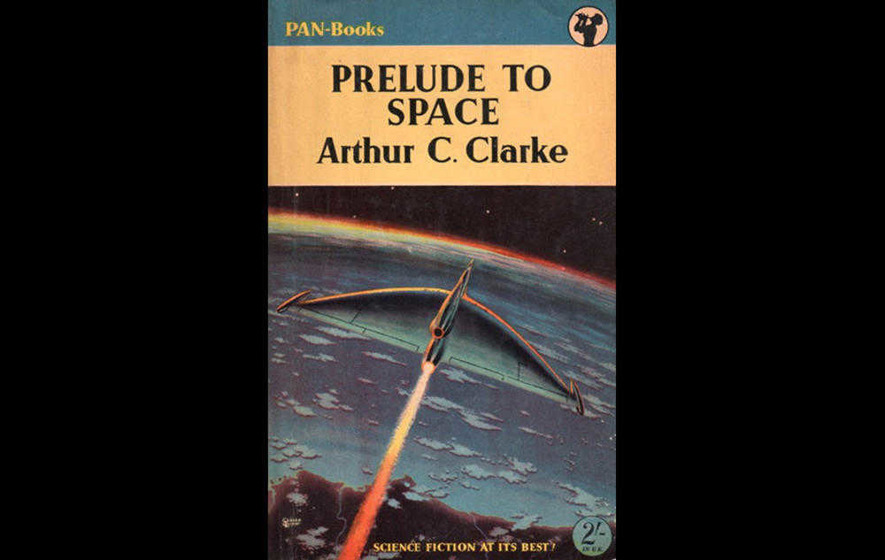By Rich Lynch: It was 80 years ago that an extraordinary event took place.
It happened on January 3, 1937, in the English city of Leeds. It was there that a group of science fiction fans gathered for what has been described as the first-ever science fiction convention.
What records remain of the event indicate there were fourteen people in attendance, several of whom would go on to become luminaries of the science fiction literary genre: Ted Carnell, Walter Gillings, Eric Frank Russell, and Arthur C. Clarke. It was a single-day conference, hosted by the Leeds branch of the newly-formed world-wide Science Fiction League of fan organizations. The day featured speeches and testimonials on various topics related to science fiction and after that, group discussions on “ways and means of improving British science fiction” according to a one-off fanzine published soon afterwards which reported on the proceedings. What resulted was the formation of the Science Fiction Association, a proto-British fan organization centered around the “four Hells” fan clubs in Leeds, Liverpool, London, and Leicester. It only lasted about two years, due to the onset of the Second World War, but it did set the stage for a permanent organization, the British Science Fiction Association, which eventually came into existence in the 1950s.
That 1937 convention was truly a seminal event, and it helped pave the way toward the promulgation of science fiction fandom throughout the United Kingdom. But was it really the first science fiction convention?
Maybe not.

Donald Wollheim, Milton Rothman, Fred Pohl, John Michel, and Will Sykora at the
1936 Philadelphia convention.
On October, 22, 1936, about half a dozen fans from New York City traveled by train to Philadelphia, where they convened for several hours at the home of one of the fans there. In all, there were a similar number of fans brought together as for the Leeds convention. What made it a convention, in the minds of its attendees, was that a business meeting was held with the host, Milton Rothman, being elected Chairman. Fred Pohl, who had been designated the Secretary, took the minutes and then subsequently lost them. But Pohl later stated that no recordable business had been brought up because the event had only been informal in nature, with fans talking to fans about things like which books they had recently read, which authors they liked, and what they hoped these authors would write next. The most significant outcome was that everyone had such a good time that a follow-up event was held in New York in February 1937 with about 40 fans attending. This created the momentum for an even bigger event, a bit more than two years later which was held in New York on July 4, 1939 – the first World Science Fiction Convention.
Those first two fan gatherings have been a source of continuing controversy ever since then. Which one was really #1? The Leeds convention was the better planned of the two, with groundwork laid for the event several months earlier – the Philadelphia convention was, according to accounts from several fans attended it, mostly spur-of-the-moment with little advance preparation. There has been speculation that the only reason that the Philadelphia event occurred at all was because of one-upsmanship. The idea for that gathering was originally put forth by New York fan Don Wollheim, who back then had gained the reputation for being quarrelsome, antagonistic, and more than a bit provocative. It’s very possible, even likely, that he knew of the upcoming Leeds event, which had been talked up not only throughout Britain but also in some U.S. prozines. So, supposing the underlying reason for the Philadelphia meet-up was really only to sabotage any Leeds stake to being the first science fiction convention, should that disqualify Philadelphia’s claim for that distinction?
No, that’s insufficient. There have been other conventions that have been organized on little more than a moment’s notice and in any event, overall intent is irrelevant – you can hold a convention for any purpose you want. A much better reason for possibly honoring Leeds as #1 is that the Philadelphia event was an invitational gathering not open to the general public, with only the New York and Philadelphia fan clubs involved. But this, too, does not hold very much water as there have subsequently been other, in effect, invitation-only conventions, including the very first DeepSouthCon. And one other criticism of the Philadelphia event’s claim for being #1 is that there was “no recordable business”, very little reportage after the fact, and indeed, not even a program. But this is the weakest argument of all, and one only has to point toward the annual Midwestcon conventions, which also have none of these, as a refutation.
And so the controversy has lingered for all this time. The 1936 Philadelphia event was first chronologically, but was it a convention or just a meeting? In the end there probably will never be a consensus – after eight decades this is still perhaps the most polarizing topic in all of science fiction fandom, at least from a historical perspective, and people will believe what they want to believe. But there have at least been attempts at finding some middle ground. Noted fan historian Mark Olson, in Fancyclopedia 3, has suggested that: “Perhaps it would be fairest to say that the first thing that could be called a convention was held in Philadelphia in 1936, while the first thing that must be called a convention was held in Leeds in 1937.” And he’s right.
But as for me, I think we are asking the wrong question. What we instead should be inquiring is: “Who first came up with the idea for staging a science fiction convention?” That’s really the more important aspect, and the Leeds group was first. There’s serendipity that they held their event at the Leeds Theosophical Society – the word ‘theosophy’ parses to ‘divine wisdom’, which is an apt description of the concept for the science fiction convention. And of that, at least, we can be absolutely certain!


